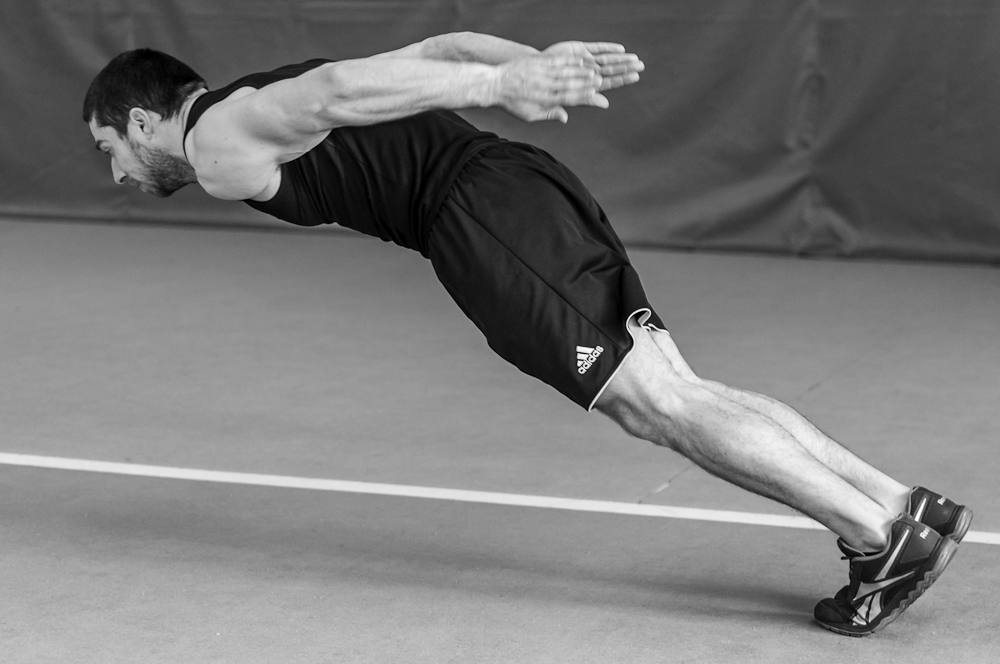Most guys, no matter how hard and smart they train, won’t be sporting the Yankee pinstripes anytime soon unless it’s in the stands or at a local sports bar. The good news is that most guys can safely train like and look like elite-level athletes. One common training method of the elite that could propel you to your next goal is plyometrics or explosive training.
Plyometric training can be a huge addition to your program when safely incorporated. A training method that aims to improve explosiveness and power, Plyometrics require a great deal of energy and force production. Follow these considerations and implement these exercises in your next workout to take your training to the next level.
Lower Body Plyometrics
Standard Drop Jumps:
- Begin by standing on a modest platform or “plyo box”.
- Carefully step off of the platform, controlled and prepared to land
- Softly land, loading into a jump position
- Forcefully jump as high as possible from the landing position
Note: Focus on spending a minimal time on the ground, forcefully transitioning into the explosive jump.
Traveling Bound Jumps:
- Begin in an athletic position, knees slightly bent and prepared to explode forward
- Forcefully jump forward as far as possible in a controlled manner
- Amid the explosive jump, drive your knees up and forward into a controlled landing
- Land on the balls of your feet, absorbing your bodyweight into an athletic position
- Repeat this movement pattern as you travel the intended distance, spending minimal time on the ground.
Note: Both gymnasiums and turf surfaces are great for traveling bound jumps. Never sacrifice proper form and a safe landing in order to reach the intended distance.
Upper Body Plyometrics
Clapping Push-Ups:
- Begin in a standard push-up position
- Forcefully perform a push-up to create significant distance between your upper body and the surface
- While in the air, “clap” your hands together
- Returning to a standard push-up position, land carefully and promptly repeat the movement pattern
Note: Always begin slow and controlled—if you need to, begin at an incline and gradually move towards a more difficult angle. You don’t necessarily need to “clap” but the explosive movement that creates such a distance is your primary benefit.
Medball Wall Slams:
- Begin in an athletic position, holding a medicine ball with both hands at chest level
- Stay in this fixed athletic position and forcefully extend both hands while releasing the medball against the wall
- Carefully catch the medball, return to your beginning position, and promptly repeat the explosive movement pattern.
Note: Start slow as you gauge the medball’s reaction to impacting the wall. As you build confidence, speed up your repetitions and increase the intensity of each slam.
These training methods will not only increase your power but they will also get your heart pumping. Partnered with a variety of other metabolic conditioning exercises, plyometrics are a highly-effective supplement and/or alternative to the “cardio” program you loathe so much. As with any training mode, proper technique and attention to detail is paramount. The implementation and mastery of such training will undoubtedly take your game to the next level—you don’t have to be a “pro” to train and look like one!

How do I go about doing these exercises if I have a bad knee?
Hey Mike,
That can be a tricky area since any heavy impact can make your knee worse. I would recommend talking with your physical therapist or doctor as they will know the full scope of your knee problems. If your knee bothers you with any kind of jumping movements, it may be easiest (and better) to avoid them altogether. You may also find that some of the exercises don’t bother your knee or make it worse. That’s going to be on a case by case basis. First step, check with your doctor.
Mike– I definitely agree with Jeremey here. You could obviously take advantage of some single leg work if the other knee is healthy as well as the upper body plyometrics discussed. Meanwhile, call up your PT and/or doc. Great question, Mike.